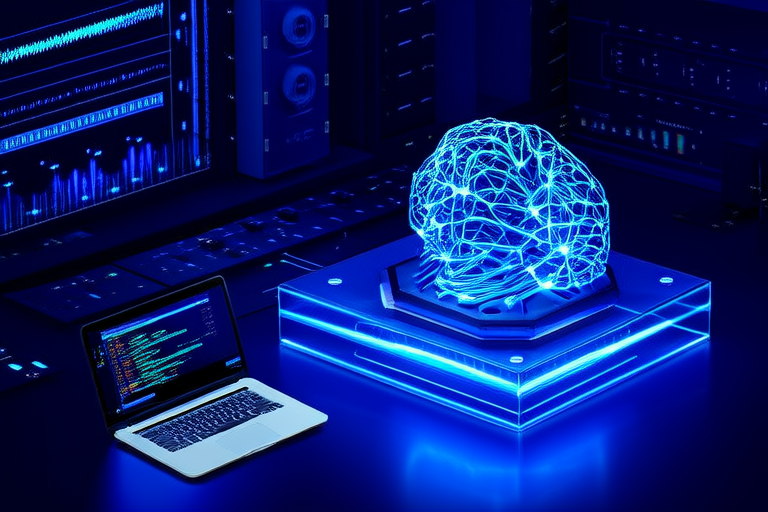The Intersection of AI and Innovation: Exploring Machine Learning Frontiers
Introduction
Artificial Intelligence (AI) has become an indispensable tool across numerous industries, revolutionizing the way we live, work, and interact with technology. At the heart of this transformation lies machine learning (ML), a subset of AI that enables systems to learn from data, identify patterns, and make predictions or decisions with minimal human intervention. As we stand at the cusp of unprecedented technological advancements, it is crucial to explore the frontiers of machine learning, which promise to redefine innovation and drive societal progress.
This article delves into the intersection of AI and innovation, focusing on the cutting-edge developments in machine learning. We will examine the historical context, current landscape, emerging frontiers, challenges, and future outlook, providing a comprehensive understanding of how ML is reshaping industries and transforming lives.
Historical Context
The journey of AI and machine learning began in the mid-20th century with the pioneering work of Alan Turing, who laid the foundation for modern computing. Over the decades, significant milestones have been achieved, including the development of neural networks, expert systems, and deep learning algorithms. These breakthroughs have paved the way for more sophisticated AI applications, enabling machines to perform tasks that were once thought to be exclusive to humans.
One of the most notable milestones was the advent of deep learning in the early 2010s, which leveraged advanced neural network architectures and vast amounts of data to achieve remarkable accuracy in image and speech recognition. This paradigm shift has propelled AI into new realms of possibility, fueling rapid advancements in various fields.
Current Landscape
Today, AI and machine learning technologies are being deployed across diverse sectors, from healthcare and finance to manufacturing and entertainment. In healthcare, ML algorithms are used to analyze medical imaging, predict patient outcomes, and personalize treatment plans. Financial institutions employ ML models to detect fraudulent transactions, assess credit risk, and optimize investment strategies. Manufacturing companies leverage AI-powered robots and predictive maintenance systems to enhance productivity and reduce downtime.
The impact of these applications is profound, as they not only streamline operations but also enable organizations to innovate and stay competitive in rapidly evolving markets. By harnessing the power of data and automation, businesses can unlock new opportunities for growth and efficiency.
Frontiers of Machine Learning
Deep Learning
Deep learning, a subfield of ML, involves training multi-layered neural networks to recognize complex patterns in large datasets. This technique has revolutionized image and speech recognition, natural language processing (NLP), and autonomous driving. For instance, convolutional neural networks (CNNs) are used in medical imaging to detect tumors and other abnormalities with high precision, while recurrent neural networks (RNNs) enable real-time translation and sentiment analysis.
Reinforcement Learning
Reinforcement learning (RL) focuses on training agents to make sequential decisions by interacting with an environment. This approach has been instrumental in developing intelligent systems that can adapt and optimize their behavior over time. Notable examples include AlphaGo, which defeated world champions in Go, and autonomous vehicles that learn to navigate complex traffic scenarios.
Natural Language Processing (NLP)
NLP has made significant strides in recent years, with advancements in transformer-based models like BERT and GPT-3. These models enable machines to understand, generate, and translate human language with unprecedented accuracy. Applications range from chatbots and virtual assistants to automated customer support and content creation tools.
Computer Vision
Computer vision, another key frontier, involves teaching machines to interpret and analyze visual information from images and videos. This technology powers facial recognition systems, autonomous drones, and augmented reality applications. It also plays a critical role in quality control and surveillance, ensuring safety and security in various settings.
Robotics
Robotic systems equipped with AI and ML capabilities are increasingly being deployed in manufacturing, logistics, and healthcare. Collaborative robots (cobots) work alongside human workers to enhance productivity, while autonomous mobile robots (AMRs) navigate warehouses and配送中心,提高效率。医疗机器人则被用于手术和康复治疗,提供精准的医疗服务。
Challenges and Opportunities
Despite the tremendous potential of AI and machine learning, several challenges must be addressed to ensure responsible and ethical development. One major concern is data privacy, as the collection and processing of personal information raise significant ethical questions. Ensuring transparency, fairness, and accountability in AI systems is essential to build trust and mitigate risks.
Collaboration between academia, industry, and government is vital to foster innovation and address these challenges. By pooling resources and expertise, stakeholders can develop robust frameworks for ethical AI, promote diversity and inclusion, and create policies that protect individuals and society.
Future Outlook
The future of AI and machine learning holds immense promise, with potential applications ranging from personalized medicine to climate change mitigation. As technology continues to evolve, it will play an increasingly important role in shaping society, the economy, and everyday life. From smart cities to autonomous transportation, AI-driven innovations will transform the way we live and work.
To stay ahead of these developments, it is crucial for individuals and organizations to remain informed about ongoing research and actively participate in shaping the future of technology. By embracing these advancements and contributing to their development, we can unlock new possibilities and create a better world for all.
Conclusion
In conclusion, the intersection of AI and innovation, particularly in the realm of machine learning, offers exciting opportunities for transformative change. By exploring the frontiers of deep learning, reinforcement learning, NLP, computer vision, and robotics, we can push the boundaries of what is possible and drive meaningful progress. While challenges exist, the potential benefits far outweigh the risks when approached with responsibility and ethics.
We encourage readers to stay curious, engaged, and proactive in the ever-evolving landscape of AI and machine learning. Together, we can harness the power of these technologies to create a brighter, more innovative future.




